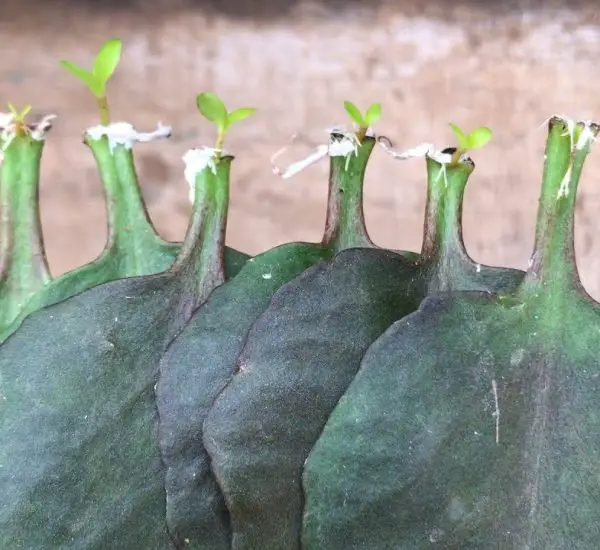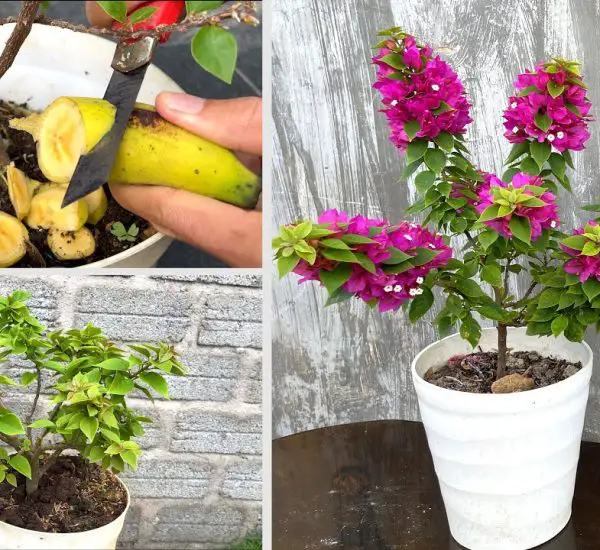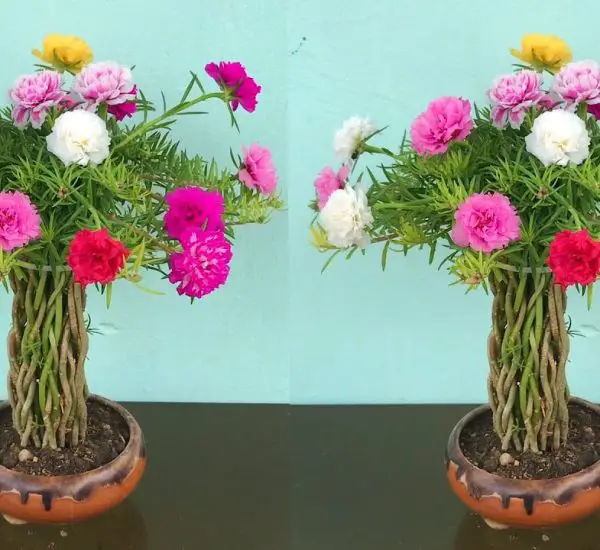Grafting roses is an age-old technique used by gardeners to create stunning new varieties, improve plant health, and increase resistance to disease. However, grafting can seem like a complicated process for beginners. The good news is that there is a new method of grafting roses that is simpler and more accessible than ever before. Whether you are a seasoned gardener or a novice looking to grow beautiful roses, this easy grafting technique can help you pair two different rose varieties with success. Let’s explore how you can graft roses in just a few simple steps!

What is Grafting?
Before we dive into the steps, let’s first understand what grafting is. Grafting is the process of joining two different parts of a plant — the scion (the upper part that produces the flowers) and the rootstock (the lower part that provides roots and nutrients). By grafting, you combine the best characteristics of both plants, such as flower quality, disease resistance, and root strength.
Why Graft Roses?
- Disease Resistance: By grafting a more disease-resistant rootstock with a delicate or highly prized scion, you can help protect your roses from common rose diseases.
- Improved Growth: Some rootstocks promote better growth, more robust roots, and better adaptability to different soil types and weather conditions.
- Creating New Varieties: Grafting allows you to combine two different types of roses to create a hybrid with unique traits, such as color, fragrance, or bloom size.
Now, let’s take a look at the new, simpler method of grafting roses.
New and Simple Method for Grafting Roses
Step 1: Select Your Roses
To begin the grafting process, you will need to select a scion (the part of the rose that will provide the flowers) and a rootstock (the part that will establish the roots). You can select a hardy rootstock that is known for its resistance to disease, and then pair it with a beautiful rose variety that you want to grow. When choosing a scion, make sure it is healthy and has at least two or three buds.
Step 2: Prepare the Rootstock
Take your rootstock and cut it off about 6 to 8 inches above the ground. Use a clean, sharp knife to make a clean cut at a 45-degree angle. This helps the rootstock and scion fit together neatly.
Step 3: Prepare the Scion
Now, select a piece of the rose you want to graft onto the rootstock. The scion should be about the same thickness as the rootstock or slightly thinner. Cut the scion just below a bud, leaving about 3-4 inches of the stem. Use a sharp knife to make a slanted cut that will match the cut on the rootstock. The goal is to create a tongue-and-groove fit between the two pieces.
Step 4: Join the Scion and Rootstock
Once both the scion and rootstock are prepared, carefully fit them together. The cut on the scion should align perfectly with the cut on the rootstock. Press them together firmly, ensuring that the vascular tissues of both parts are in contact. This is critical for successful grafting, as the vascular tissues are responsible for transferring water and nutrients between the two parts.
Step 5: Secure the Graft
To secure the graft, use grafting tape or a rubber band to hold the scion and rootstock together. This will keep them tightly connected while the graft begins to heal. Some gardeners also wrap the graft with parafilm or grafting wax to prevent moisture loss and protect the graft from diseases.
Step 6: Care for the Graft
After securing the graft, place the rose in a shaded area where it won’t be exposed to direct sunlight or harsh winds. Keep the graft site moist but not soaking wet. Water the graft regularly, but avoid overwatering, as this can cause rot.
During the healing process, make sure to check the graft regularly. Once you see new growth emerging from the scion, this is a good sign that the graft has been successful! At this point, you can remove the grafting tape and allow the rose to grow freely.
Tips for Successful Grafting
- Use Clean Tools: Always sterilize your knife, scissors, and other tools before using them to prevent the spread of diseases.
- Choose Compatible Roses: Not all rose varieties are compatible for grafting. For best results, choose varieties that have similar growth habits.
- Graft in the Right Season: The best time to graft roses is in early spring when the plants are starting to actively grow but are not yet in full bloom.
- Provide Proper Care: Even after grafting, continue caring for your rose with proper watering, light, and nutrients. This will help the graft heal quickly and the plant grow strong.
Benefits of Grafting Roses the Simple Way
- Less Complicated: This new method of grafting roses is easy to follow, even for beginners.
- Faster Results: By using this technique, you can quickly enjoy beautiful roses with strong roots and disease resistance.
- Increased Success Rate: This method provides a higher success rate due to the simplicity and precision of the grafting cuts.
Conclusion
Grafting roses may sound intimidating, but with this new and simple method, it becomes a manageable and rewarding gardening task. Whether you want to create your own rose varieties, increase disease resistance, or simply enjoy a more robust and beautiful rose garden, grafting can offer you a new world of possibilities. By following these easy steps and providing the proper care, you’ll soon be able to enjoy a vibrant, thriving rose garden—without any hassle! Happy grafting!



